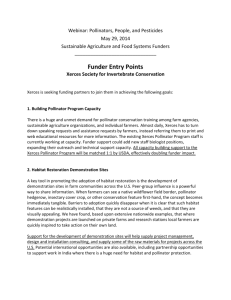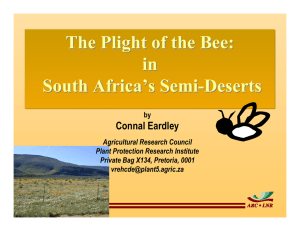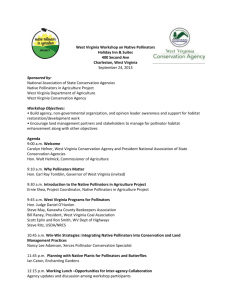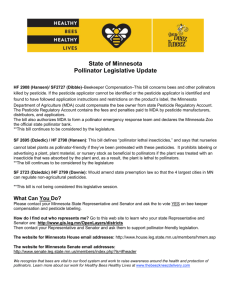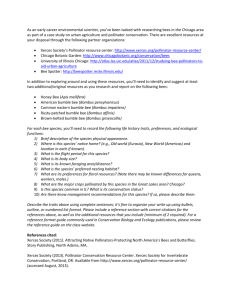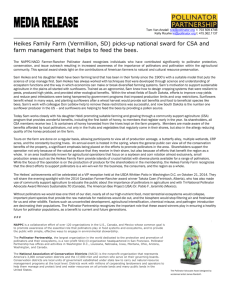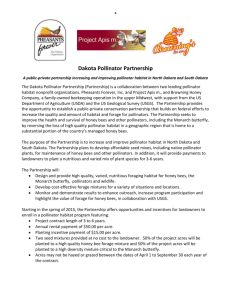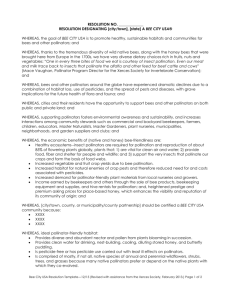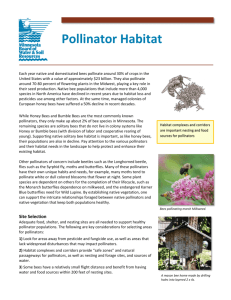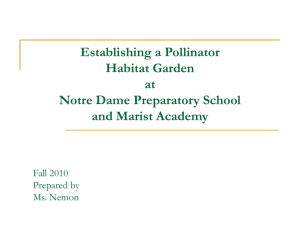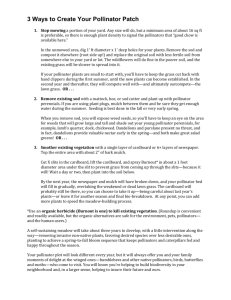Presentation Talking Points
advertisement
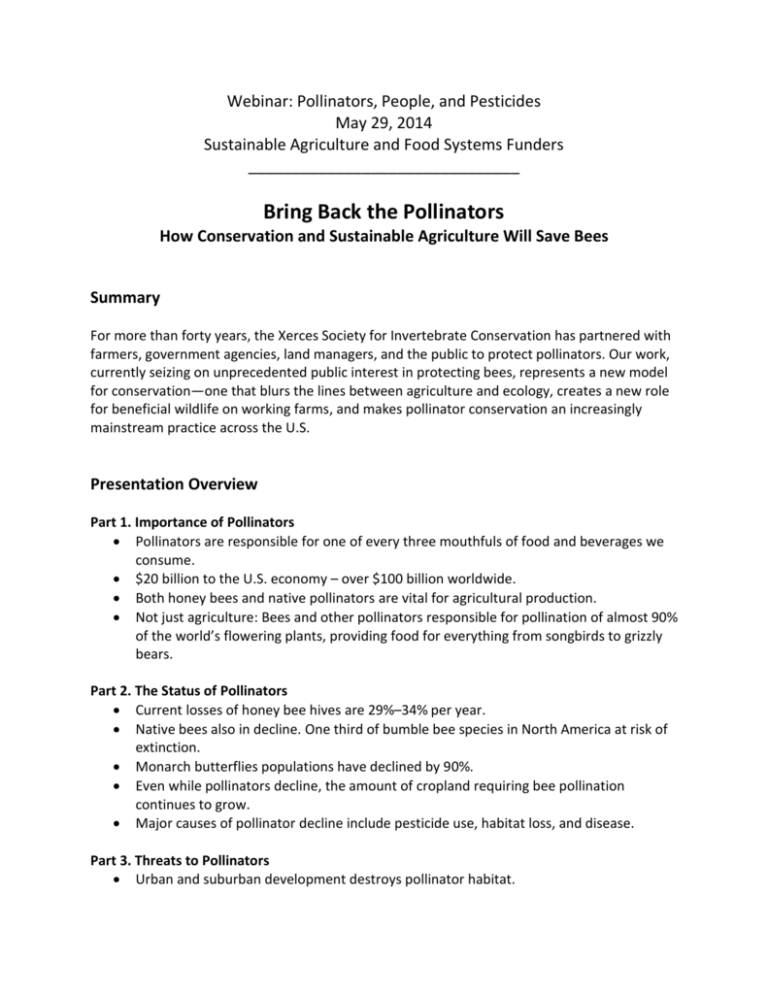
Webinar: Pollinators, People, and Pesticides May 29, 2014 Sustainable Agriculture and Food Systems Funders _______________________________ Bring Back the Pollinators How Conservation and Sustainable Agriculture Will Save Bees Summary For more than forty years, the Xerces Society for Invertebrate Conservation has partnered with farmers, government agencies, land managers, and the public to protect pollinators. Our work, currently seizing on unprecedented public interest in protecting bees, represents a new model for conservation—one that blurs the lines between agriculture and ecology, creates a new role for beneficial wildlife on working farms, and makes pollinator conservation an increasingly mainstream practice across the U.S. Presentation Overview Part 1. Importance of Pollinators Pollinators are responsible for one of every three mouthfuls of food and beverages we consume. $20 billion to the U.S. economy – over $100 billion worldwide. Both honey bees and native pollinators are vital for agricultural production. Not just agriculture: Bees and other pollinators responsible for pollination of almost 90% of the world’s flowering plants, providing food for everything from songbirds to grizzly bears. Part 2. The Status of Pollinators Current losses of honey bee hives are 29%–34% per year. Native bees also in decline. One third of bumble bee species in North America at risk of extinction. Monarch butterflies populations have declined by 90%. Even while pollinators decline, the amount of cropland requiring bee pollination continues to grow. Major causes of pollinator decline include pesticide use, habitat loss, and disease. Part 3. Threats to Pollinators Urban and suburban development destroys pollinator habitat. 9+ million acres of grassland/prairie converted to cropland since 2008 Systemic Insecticides: Neonicotinoids—Systemic mode of action results in residues in pollen and nectar; can be persistent for long periods in plants (up to six years in a woody plant after a single application) and soil (over two years). Part 4. Reversing Pollinator Declines Pesticide-free habitat is the key ingredient for maintaining honey bee numbers and wild bee populations. Many farms lack habitat. It is vital that we work to restore, enhance, and create longterm, perennial habitat areas on and around farms. Also important to develop whole-farm strategies that address issues such as pesticide use and tillage to improve overall health of pollinator populations on farms. Part 5. Xerces Pollinator Program The 2008 and 2014 Farm Bills include specific provisions that make pollinators a conservation priority. This allows farmers to get cost-share funding for habitat improvements. Pollinator conservation training (including workshops, short courses, farm walks, and conference presentations) by Xerces staff have reached 26,000 people in the past 5 years. Xerces works with leading scientists to translate research findings into easy-to-use conservation guidelines. We also summarize important science regarding insecticide impacts on pollinators and other beneficial insects, publishing this is a series of science reports. This information is used to promote change at the national, state, and local level in how these chemicals are used. Xerces is working with the seed industry to make high-value wildflower seed for habitat restoration more available and less expensive. Xerces staff work with farmers and agricultural agency personnel to restore high-quality habitat and expand pesticide risk reduction training. Since 2008, Xerces has helped restore more than 120,000 acres of native plant habitat on U.S. farms for pollinators. We have the largest pollinator conservation team in the world, which includes expertise in entomology, conservation biology, restoration ecology, and education. Not just farms: There are over 10 million acres of roadside land in the U.S., a great opportunity for conservation. The plight of pollinators resonates with the public at large and can be used to educate the public about pesticides and the restoration of urban habitats and wild areas alike. Share the Buzz. Working with retailers to incentivize pollinator protection. For example, the Whole Foods Market Produce Sustainability Index metrics for “bee-safe” farm products include pesticide restrictions and protecting and restoring habitat for bees.
